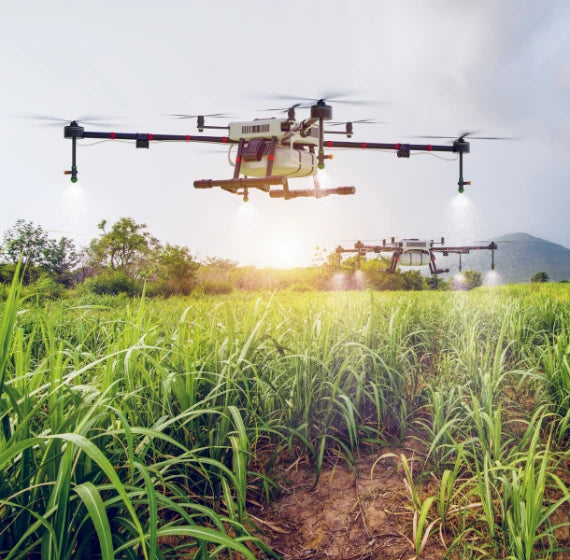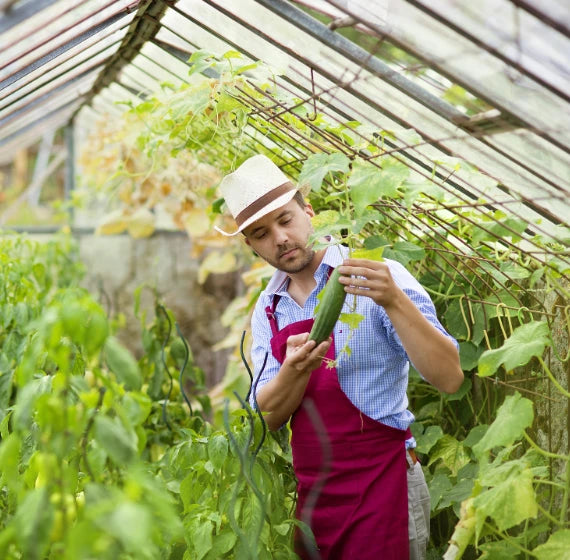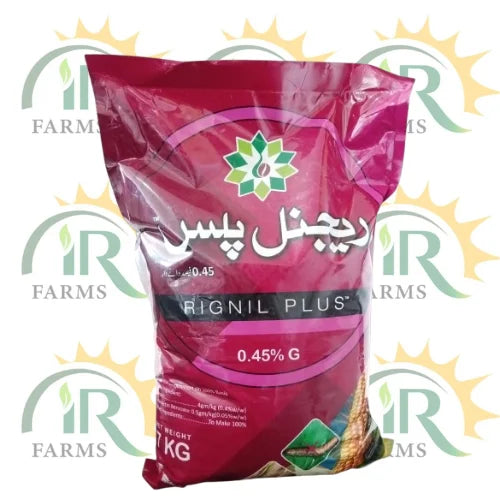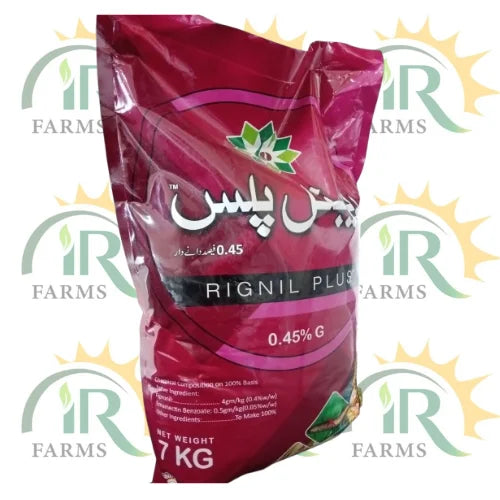Rignil Plus 0.45G Tara Group 7Kg Fipronil And Emamectin
Rignil Plus 0.45G Tara Group 7Kg Fipronil And Emamectin
Available in stock (1000)
Rignil Plus 0.45G, developed by Tara Group and available at IR Farm, is a potent pest control solution formulated with two active ingredients: Fipronil and Emamectin.
This unique combination provides comprehensive protection against a wide range of pests, making it an invaluable tool for farmers and agricultural professionals.
With a net weight of 7 kg, Rignil Plus is designed for ease of use in large-scale applications, ensuring that crops remain healthy and productive throughout the growing season.
Key Features Of Rignil Plus 0.45G
Feature |
Description |
|
Active Ingredients |
Fipronil (4 gm/kg), Emamectin (0.5 gm/kg) |
|
Formulation |
Granular (0.45G) |
|
Target Pests |
Broad spectrum of agricultural pests |
|
Packaging |
Convenient 7 kg bag |
|
Ease of Use |
User-friendly application process |
|
Brand Trust |
Manufactured by Tara Group, a leader in agricultural solutions |
Active Ingredients Explained
Fipronil
Fipronil is a well-known insecticide effective against a variety of pests. It acts on the central nervous system of insects, leading to their rapid death. With 4 gm/kg in Rignil Plus, Fipronil ensures effective pest management and quick results.
Emamectin
Emamectin is another powerful insecticide that works differently than Fipronil. It disrupts nerve function in insects, providing a lasting effect even after initial application. At 0.5 gm/kg, Emamectin enhances the residual action of Rignil Plus, ensuring long-term protection against reinfestation.
How Rignil Plus 0.45G Works
Rignil Plus employs a dual-action approach to pest control, effectively addressing current infestations while also preventing future problems. The combined effects of Fipronil and Emamectin create a synergistic action that maximizes efficacy and extends the protection period.
Application Method
-
Preparation: Ensure that the application area is clear of debris and other obstacles that might hinder effective treatment.
-
Dosage: Depending on the type of pest and severity of infestation, the recommended dosage may vary. Always refer to the product label for specific guidelines.
-
Application: Apply the granules evenly across the affected area, ensuring thorough coverage. It is advisable to focus on known pest hotspots and areas where plants show signs of damage.
-
Timing: For optimal results, apply Rignil Plus during the early morning or late afternoon to avoid heat stress and enhance efficacy.
Recommended Dosage
|
Application Type |
Dosage Recommendations |
|
General Pest Control |
10-15 kg per hectare for general use |
|
Severe Infestations |
Up to 20 kg per hectare for heavily infested areas |
Benefits of Using Rignil Plus 0.45G
Enhanced Pest Management
-
Broad Spectrum Protection: Rignil Plus targets a wide range of pests, making it a versatile solution for various crops and farming scenarios.
-
Rapid Action: The formulation acts quickly, reducing pest populations effectively and ensuring minimal crop damage.
User-Friendly
-
Simple Application: The granular formulation is easy to handle and apply, making it suitable for both experienced farmers and those new to pest management.
-
Convenient Packaging: The 7 kg bag is ideal for larger agricultural operations, ensuring that farmers have enough product on hand for their needs.
Frequently Asked Questions
What types of pests does Rignil Plus 0.45G target?
Rignil Plus is designed to target a broad spectrum of agricultural pests, including but not limited to aphids, whiteflies, caterpillars, and beetles. Always check the product label for a complete list of targeted pests.
How quickly will I see results after applying Rignil Plus?
Farmers typically observe results within hours of application, thanks to the rapid action of Fipronil and Emamectin. Most pests will show signs of decline shortly after treatment.
Is Rignil Plus safe for the environment?
When used according to the manufacturer's instructions, Rignil Plus is designed to minimize environmental impact. Always adhere to local regulations and guidelines for pesticide use.
How often should I apply Rignil Plus?
The frequency of application will depend on the level of pest pressure and the specific crop being treated. Generally, reapplication may be necessary every 2-4 weeks.
Couldn't load pickup availability
Don’t miss out on this limited-time advantage crafted for you
About This Product
About This Product
Our agriculture products are selected to help farmers grow healthy crops and achieve better yields. Every product is genuine, effective, and trusted in the farming community.
Why Choose This Product?
- 🌱 Improves crop growth and protection
- 💧 Easy to apply with clear instructions
- 🛡️ Safe and reliable for farm use
- 📦 Delivered fresh with secure packaging
We aim to provide farmers with the right solutions for every season.
Product Highlights
Product Highlights
- Genuine and trusted by farmers
- Supports crop health and yield
- Easy to apply with clear guidance
- Suitable for major crops in Pakistan
- Safe and effective for long-term use
Shipping & Return
Shipping & Return
We deliver all across Pakistan, aiming for same-day delivery whenever possible. Most orders reach you within 2–4 working days, packed with care. If you receive a damaged or wrong product, you can request a return or exchange within 7 days — quick, simple, and hassle-free.
Your payment information is processed securely. We do not store credit card details nor have access to your credit card information.
4 Steps to a Healthier Farm

Prepare & Protect
Give your crops the strong foundation they need. Healthy soil and proper preparation ensure that seeds, fertilizers, and crop protection products work effectively to support growth and resist pests.

Nourish & Boost
Provide essential nutrients and supplements to your crops. Using the right fertilizers and growth enhancers helps plants develop strong roots, vibrant leaves, and better overall health.

Monitor & Care
Regularly check on your plants to prevent diseases, pests, or nutrient deficiencies. Timely observation and care help maintain crop quality and maximize yields.

Harvest & Celebrate
Reap the benefits of your hard work! Healthy, thriving crops lead to higher yields, better profits, and the satisfaction of seeing your farm flourish.
Discover more in our FAQ
Are your products original?
Are your products original?
Yes, all our products are 100% genuine. We source seeds, fertilizers, and pesticides directly from trusted companies to make sure farmers always get reliable quality.
How many days does delivery take?
How many days does delivery take?
Normally delivery takes 2–4 working days anywhere in Pakistan. We ship through Leopard and TCS, so even remote areas are covered quickly.
Do you offer Cash on Delivery?
Do you offer Cash on Delivery?
Yes, Cash on Delivery is available all over Pakistan. You can check your parcel before paying to stay worry-free.
What if I get a wrong or damaged product?
What if I get a wrong or damaged product?
No problem at all. If you receive the wrong or damaged item, just contact our support team. We will arrange a quick replacement or refund without hassle.










